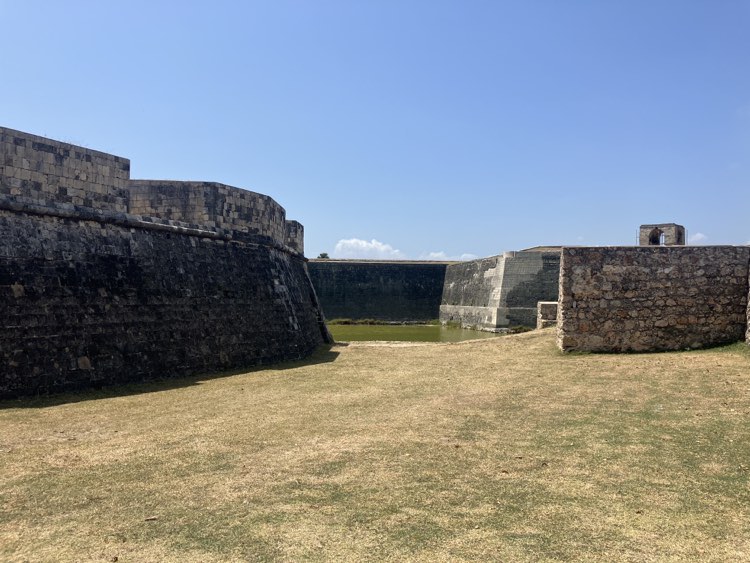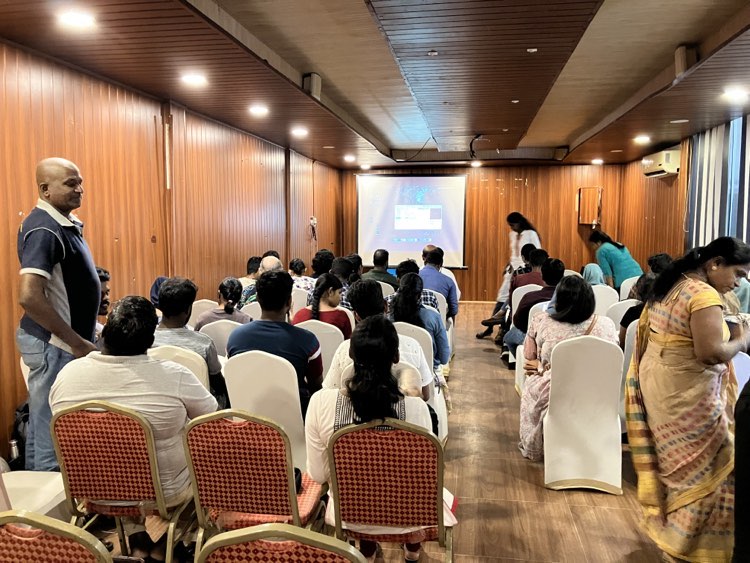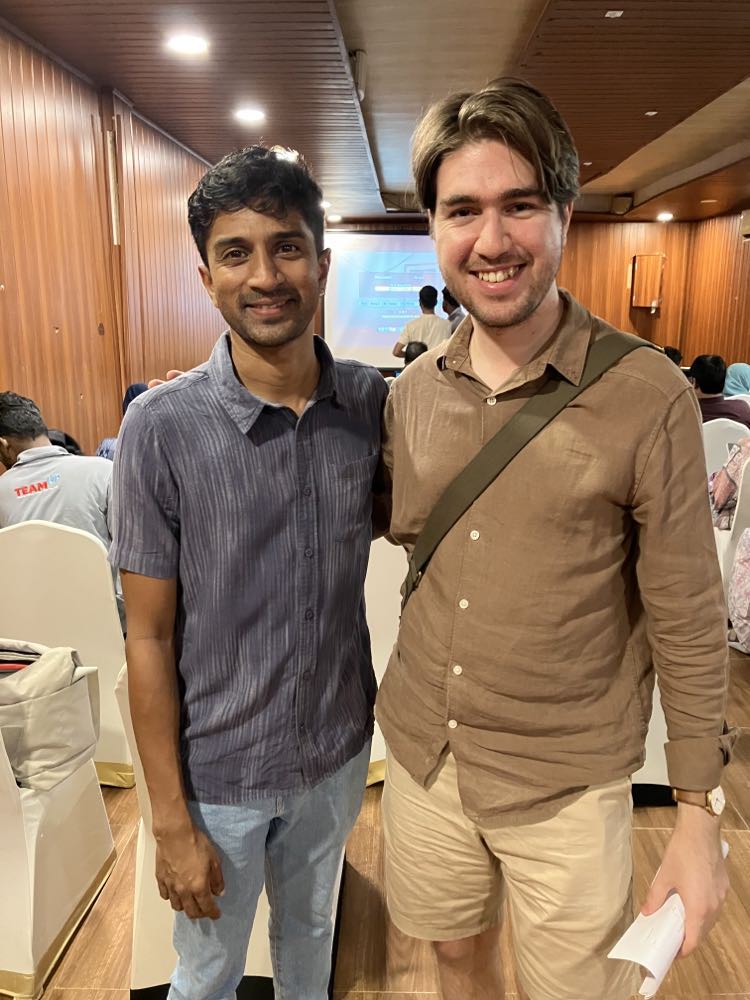Sophie Bisping, who interned at ICES last year, researched mass graves in Sri Lanka and produced a report which formed the basis of a documentary (‘In Plain Sight: Searching for Truth Behind Sri Lanka’s Mass Graves’). Towards the end of my internship, I had the opportunity to travel with some colleagues up North for two screenings of the documentary, one in Kilinochchi and one in Jaffna. ICES has commissioned the production of another documentary which will be based on the research I’ve conducted on impunity in Sri Lanka. Travelling up North to attend screenings of the mass graves documentary was therefore fascinating not only because I witnessed the rippling impacts of human rights research on the ground but also because I had a ‘preview’ of what the fruits of my own work this summer will be.
My colleagues and I left ICES at four in the morning by van. It takes eight to nine hours to drive up to Jaffna. As you move northward, you can feel the moisture being sapped out of the air by the sun which seems to gain more and more intensity. The landscape flattens, with thick jungles and rolling hills yielding to sand and sparsely spread palmyra trees. After passing through Anuradhapura and its ancient, bulging stupas filled with relics of the Buddha—some ashes, a collarbone, a leather belt—, the human landscape changes, too. White stupas and statues of Buddhas with half-closed eyes give way to multi-coloured Hindu temples and dancing Shivas, and Tamil children in white uniforms cycle to school on the sandy streets. In other words, the eight-hour drive to Jaffna is not a suitable time to sleep.

The two screenings were vastly different. In Kilinochchi, there were about a dozen attendants, most of whom featured in the film either directly or indirectly. Some of the mothers who shared their stories on the film about their sons’ and husbands’ enforced disappearances were present. When conducting so-called ‘desk’ research—even on topics as visceral as gross human rights violations—, there is an inevitable distance between researcher and researched. The searching and analytical mind easily takes over, dimming the felt knowledge that this work is entwined with human lives. Sharing a space with these mothers, who have been involved for years in seeking truth on the fate of their (and others’) loved ones, was a moving experience. It was hard to hold back tears when they expressed gratitude for having their stories represented and recognized, as well as shown to audiences in Colombo. I was grateful to share the room with these women.
Even though many of the people who had confirmed their attendance to the Jaffna screening were not present (for fear of reprisals from army and security forces), the venue was packed. I was glad when more chairs had to be brought in and my colleagues and myself leaned against the walls to watch the documentary. Interestingly, the reception was—overall—negative. While many individuals expressed gratitude in one-on-one discussions after the screening, several people in the audience expressed anger during the Q&A session that the film was not, in short, ‘enough’. “It’s nice to know, but we want justice. What are your proposals for this?” “We all know who’s responsible for this—why isn’t the film more explicit in its conclusions?” “Our lives are in danger when we attempt to research this—even when we try to photograph the sites. How did you manage to conduct this research?” “You have a responsibility to go into more depth.” A woman in the audience even approached me during the Q&A session, saying “you’re a foreigner—please express your opinion on this.”

This reaction raises a multitude of reflections, but I’ll pursue one in particular—namely, the kind of ‘knowledge’ which human rights research should produce. It was evident that many members of the audience were irritated by the documentary’s ethos of reconciliation and its attempt to represent ‘all sides’ on the topic of mass graves. While enforced disappearances (and mass graves, which are linked to them) have affected Tamil communities more than Sinhala and Muslim communities, the documentary nonetheless aims for ‘ethnic balance’ and a tone which is more educational than accusatory. There are, of course, many arguments in favour of this approach, but the audience’s reaction nonetheless made me reflect on the kind of knowledge which humans rights work should produce and the manner in which it should presented. Namely, should human rights research be ‘impartial’ and ‘neutral’? Or, should it be in itself a form of activism, geared towards practical action? Are these goals in conflict?
In the beginning of my internship, I was very meticulous about adopting an apolitical approach to the topic of impunity. I wanted to ensure that I reported on events in an even-handed manner and fact-checked my sources. When I expressed my concerns about impartiality to an academic affiliated with ICES, she tried to assure me: “Most of Sri Lanka is filled with Sinhala-biased discourses, so even if your report is biased towards a Tamil perspective, this will simply help tip the scales towards something more equal.” This pragmatic approach to research, information, and knowledge made me feel queasy. Should human rights research be synonymous with activism? Should knowledge be instrumentalized for political aims? Reflecting on the audience’s reaction to the documentary in Jaffna, my answer to these questions is—a very qualified and hesitant maybe.
F.R. Scott, the poet and Dean of McGill Law who also planted some of the first seeds of democratic socialism in North America, once complained about his colleagues in a poem titled ‘To Certain Friends’:
“They show great zeal collecting the news and statistics.
They know far more about every question than I do,
But their knowledge of how to use knowledge grows smaller and smaller.
They make a virtue of having an open mind,
Open to endless arrivals of other men’s suggestions,
To the rain of facts that deepens the drought of the will.
Above all they fear the positive formation of opinion,
The essential choice that acts as a mental compass,
The clear perception of the road to the receding horizon.
For this would mean leaving the shade of the middle ground
To walk in the open air, and in unknown places;
Might lead, perhaps—dread thought!—to definite action.”
Perhaps human rights research, then, is something which compels us to ‘leave the shade of the middle ground’ and use the knowledge we produce to charge our wills to definite action. Perhaps it is something which approximates practical knowledge more than truth. Perhaps.

N.B. The documentary on mass graves has been submitted to film festivals and will be made available publicly on YouTube. Alternatively, you can write to ICES and request the film to be shared privately with you.
